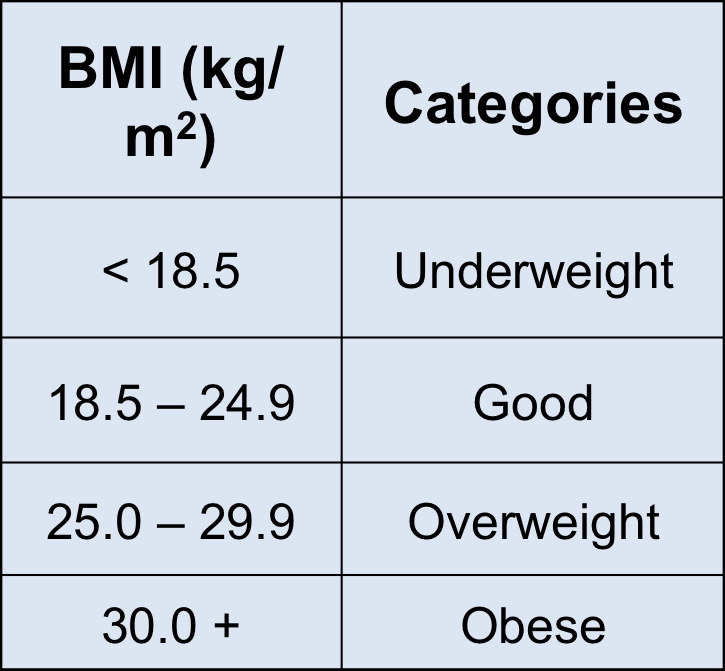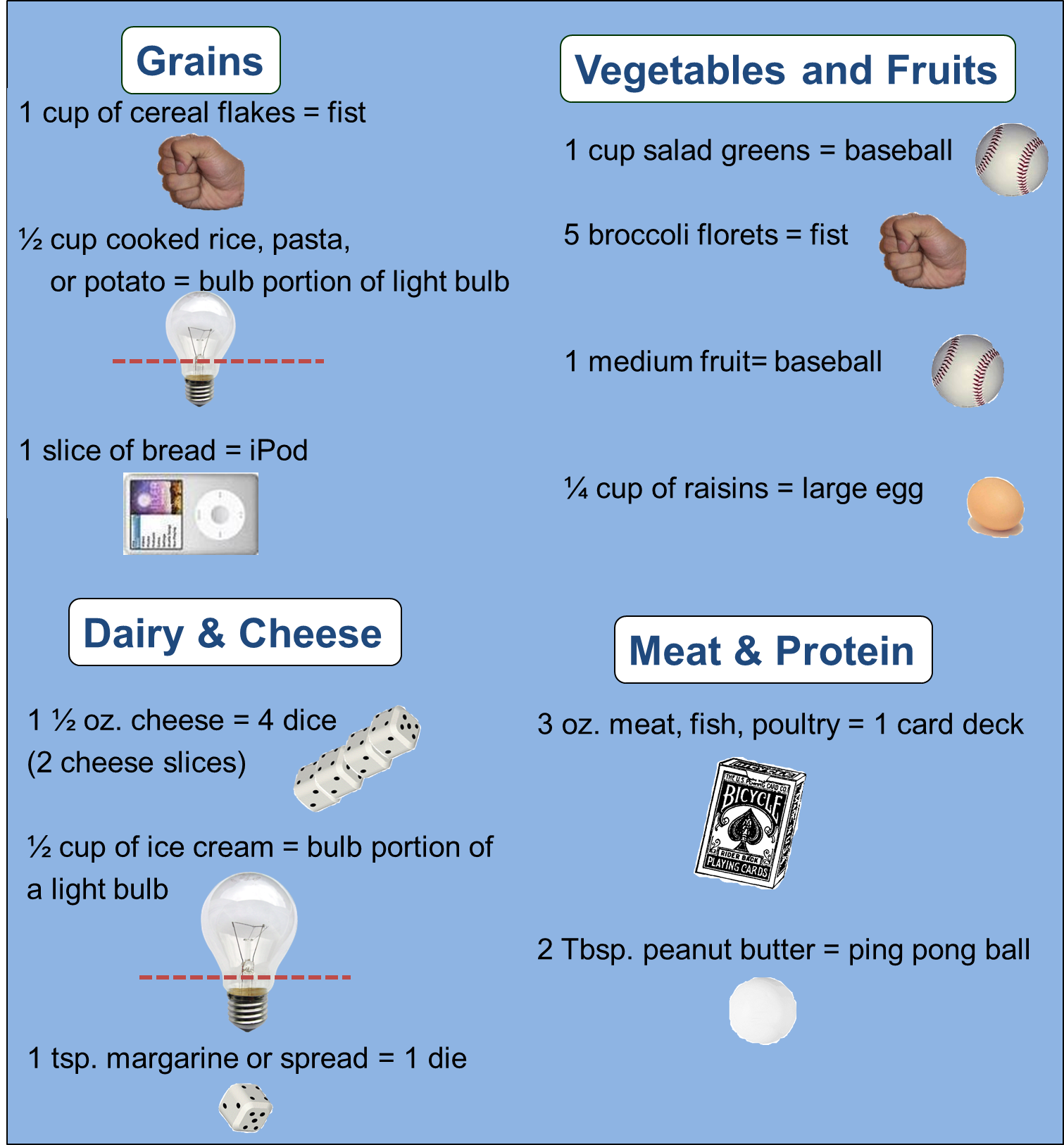Dietary Self-Assessment
A dietary self-assessment should include four basic elements:
- Pre-assessment Reflection
- BMI Calculation
- MyPlate 24-hour Recall
- Interpret Results and Set Goals
1. Pre-assessment Reflection
Before beginning your self-assessment, ask yourself how you perceive your health based on your weight/BMI and current dietary habits. Not surprisingly, physicians who have a higher awareness of their own diet are more likely to counsel patients about nutrition and the importance of achieving a healthy weight, and physicians who have intentionally altered their own diets are more likely to assist patients in making dietary changes.
2. BMI Calculation
BMI is an abbreviation for body mass index. This is a calculated measurement based on one's height and weight that is used as screening tool for body fat and to identify potential health risks. BMI is not an exact measure of body composition, and it can be misleading, for example, when used in professional athletes. However, it is a useful screening tool in the general population.
|
BMI = kg/m2 (or BMI = lbs/in2 x 703) |
One can also use the widget below to calculate BMI in adults.
Once you have calculated BMI, the table below will provide a general classification scheme.

3. Healthy Plate Food Tracker
For this part of the assessment you will need to know:
- the types of all food and beverages (including milk, soda, juice and iced tea) you had in the past day (brand name may be helpful).
- the method of preparation (raw, cooked, with salt or with butter, etc.)
- the amount of each food eaten (i.e. cups, ounces, pieces etc.)
To start the recall:
- Go to SuperTracker Foodtracker https://www.supertracker.usda.gov/foodtracker.aspx
- Register as a new user or login with your user ID and password.
- Enter your age, gender, weight, height, and activity level.
- Click "Proceed to Food Intake."
To complete the recall:
- Foodtracker will break the day into snacks and 3 meals. Search the database for the foods (or ingredients) and beverages you consumed in the last 24 hours.
- Select each food, estimate the quantity of each item you select, and add it to the appropriate meal or snack. You will then see the item added to your 24-hour food recall.
- When you are finished, you will see the calorie breakdown for each meal, as well as the day, and the nutrient breakdown for the entire day.
The nutrient intake will be calculated and compared to your personal MyPlate recommendations and to the 2011 Dietary Guidelines. Suggestions for improving your diet will be included.
|
Tips for Completing the 24-Hour Recall |
|---|
If you do not find the exact food item you ate:
|
Estimating Portion Size
Here are some helpful conversion factors.
1 cup = 16 Tablespoons
1 Tablespoon = 3 teaspoons = 1/16 cup = 0.0625 cups
1 teaspoon = 0.33 Tablespoon = 0.02 cups
And here are some easy ways to estimate portion sizes:

All portions above are based on one standard serving. If the cereal in your bowl looks like 2 fists, count it as 2 cups in the tracker.
4. Interpreting Your Results
Using the tracker is a great starting point to analyze your dietary intake, but remember:
- There are limitations of the food database (e.g., not having certain food items or dietary supplements)
- Difficulty in remembering or estimating portions eaten may affect the accuracy of the analysis.
- If the past 24 hours were not a typical day for you, your analysis may not reflect the quality of your overall diet.
Therefore, use your results as a general guideline. For a more accurate analysis, try measuring and recording your intake at meals and using the tracker for multiple days.
Next Steps
The next step is to honestly consider the results of the 24-hour recall and the recommendations and to review the basic information presented in the beginning of this module. What have you learned from the analysis and the recommendations?
Set short- and long-term achievable goals and make some healthy changes. Rather than making severe changes in your diet, consider where modest changes could be made to provide you with healthier meals. Also consider the guidelines for physical activity. Again, instead of making severe changes that are not sustainable, think about your typical daily activities and try to come up with a workable plan that will increase your activity. Little additions in activity can really add up, for example, parking farther at the far end of a parking lot instead of trying to get the closet spot to your destination. Try to add time for activities that you enjoy - anything that gets you moving - biking, walking, golf, gardening....
Remember also that Registered Dietitians can provide valuable help, particularly if you are confused about what changes to make in order to improve your nutrition. Dietary assessments are useful for initial evaluations and a great way for you to start a conversation about diet and exercise habits. Patients with diet-related concerns or conditions should be referred to a Registered Dietitian for a thorough assessment and continuing care.